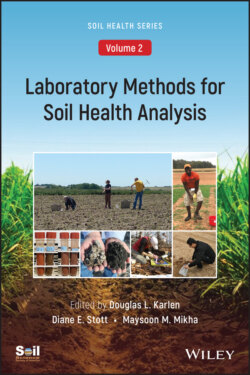Читать книгу Laboratory Methods for Soil Health Analysis, Volume 2 - Группа авторов - Страница 47
Chemical Effects
ОглавлениеChemical benefits of SOC relate to the transformation and flow of soil nutrients, such as mineralization and immobilization of N, P, and S. The nine essential macronutrients for plant growth are C, O, H, P, K, S, Ca, and Mg. The first three are in greatest abundance within the SOM structure (Schnitzer and Khan, 1975). However, plants need N for enzymes, proteins, and chlorophyll, which are mainly derived from SOM (Schnitzer and Khan, 1975). Nearly all N in SOM is inaccessible to plants until it is converted by microbes into ammonium (NH4) and nitrate (NO3). The SOM is also a source of P, generally making up 15 to 80% of total soil P (Mortensen and Himes, 1964). Soil S is estimated to be 50 to 70% in or adsorbed onto SOM (Schnitzer and Khan, 1975). Conversely, K, Ca, and Mg are primarily derived from insoluble inorganic compounds and have not been demonstrated to be obtained from SOM (Schnitzer and Khan, 1975). However, K, Ca, and Mg can form complexes with SOM (Broadbent and Ott, 1957; Schnitzer and Skinner, 1963) and the capacity of soils to store mineral nutrients (i.e., CEC), increases with SOM.
